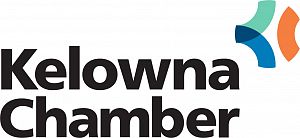The Canadian Chamber is participating in the COP21 Climate Conference, which is running from November 30 to December 11. Canadian Chamber staff will be producing periodic briefing notes to keep our membership apprised of the proceedings and the potential impact for Canadian business. Formore information, click here.
COP21 From week 1 to 2
Week one of COP is typically regarded as the less interesting one, but that was certainly not the case this year. It kicked off with speeches from global leaders, was packed with informative high-level side events and culminated with French President Holland and UN Secretary General Bank Ki Moon concluding a business-focused Action Day on Saturday.
Negotiations are certainly more technical in the first week, but the side events surrounding the negotiations—discussions by business, NGO and political leaders on all aspects related to climate, from finance to CCS technologies—are where many critical conversations happen to inform climate-related work moving forward. In fact, there is so much going on around the margins of COP, including various business events and forums around town, that the negotiations appear to be the catalyst for most of the critical announcements on climate change.
Enter the ministers
A key milestone occurred on Saturday as the draft text was passed from the working group of negotiators to the French presidency, which will work with ministers this week to try and reach a final agreement by tomorrow. This timeframe would allow for a legal review of the text before the planned adoption on Friday. However, the conference site (Le Bourget) is booked until Monday morning, and it would not be unlikely if negotiations went longer than planned.
In a briefing with a senior White House official, we were told there were concerns that negotiations could get derailed in week one, as negotiators haggled to include preferred options in the text on key issues. It was also mentioned that most of the important developments in climate finance are already occurring in the private sector, outside of the COP discussion on reaching $100 billion in financing by 2020, for which the Green Climate Fund would play a central role. In other words, the private sector and civil society are moving ahead of COP on the climate finance front.
The general feeling is that the ministers have arrived with strong direction to conclude an agreement, as supported by the political will voiced by national leaders at the opening of the conference. The repeated phrase uttered around Le Bourget is that “the world is finally at a tipping point” and that this agreement will succeed were previous ones had failed. But many questions remain as to where the final text will land and how ambitious it will be.
Tackling the cross-cutting issues
The French presidency announced four informal working groups, facilitated by ministers, to work on cross-cutting issues:
- Support – this group is handling the means of implementation on finance, technology and capacity building.
- Differentiation – This is perhaps the most fundamental issue at COP21—to what extent responsibilities are divided between the developed and developing world? Previous climate change agreements have been based on a binary division, placing a heavy burden on developed countries. Not surprisingly, the developed countries want to spread responsibility more while the developing countries are pushing back and want guarantees of financial and technological assistance. The working group on this topic is tackling issues around mitigation, finance and transparency (referring to a system for monitoring progress on commitments outlined in countries’ submitted plans—the INDCs). Transparency is linked to plans for a review mechanism to assess progress. At present, it seems negotiations are leaning toward a five-year review mechanism following 2020 where countries could voluntarily raise their targets.
- Ambition – This group is charged with defining a long-term objective to the agreement. The main issue here is whether the text calls for limiting the global temperature increase to two degrees Celsius. Many groups are calling for a 1.5-degree goal, and a clever hand sign for supporters has been making waves around the halls. The text started the week with ‘two degrees’ or ‘well below two degrees’ bracketed as options. However, the current package of INDCs, if implemented, is estimated to result in a temperature increase of 2.7 degrees or more. Hence, achieving a 1.5-degree target would require much more significant emissions reductions plans from nations. Questions remain as to whether other long-term goals should be included, such as zero global emissions, decarbonization (reducing or eliminating the burning of fossil fuels), carbon neutrality (balancing the amount of carbon released with activities that either capture and store carbon emissions or those that support clean and renewable technologies) or a global emissions peak or reduction target by a specific year.
- Pre 2020 – This group deals with obligations before 2020, as outlined in previous COP agreements, and the possibility of accelerating implementation and efforts on adaptation. In addition to these main working groups, COP21 President Fabius has since announced groups on adaptation, loss and damage, cooperative mechanisms (led by Canada’s Minister McKenna), forests, response mechanisms and legal issues.
What's Canada pushing for?
Canadian negotiators have taken a strong stance on including a reference to non-state stakeholders, including indigenous peoples, into the text of the agreement. Depending on whether, where and how such language is included in the final text, there could be implications for domestic policy and natural resource development. In addition, the negotiators indicated they would be supportive of reviewing the INDCs prior to 2020 to ratchet up their ambition, although the EU was pushing for reviews to commence post-2020.
At the daily briefings with the delegation, there is a general sense of support amongst the NGO and Aboriginal communities for the team, with one Aboriginal leader even expressing thanks to the government. However, the business community and the Canadian Chamber are also present at Le Bourget and are taking opportunities to inform Minister McKenna and her team of industry’s position.
In yesterday’s briefing, Canada indicated that it would support a more ambitious target than a two-degree limit in temperature warming and has moved toward supporting the 1.5-degree target. It was also noted that Canada will contribute $150 million to the Africa Renewable Energy Fund.
The week ahead
This week is when the fireworks happen in the negotiations. Ministers will add, remove, modify and compromise on text and options to reach the final agreement. Basically, everything in the text is still on the table, although many of the less controversial clauses were essentially dealt with last week. Now is the time to tackle where to land on differentiation, loss-and-damage (or payment to nations harmed by climate change), finance, mitigation, the reporting/review mechanism, long-term goals and ambition—in other words, there is still much work ahead in the final days.
Please contact Katrina Marsh (kmarsh@chamber.ca) should you have any comments or questions on this brief.


